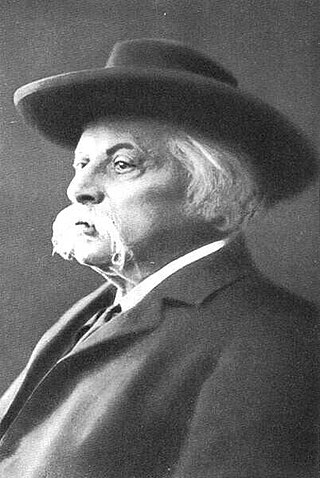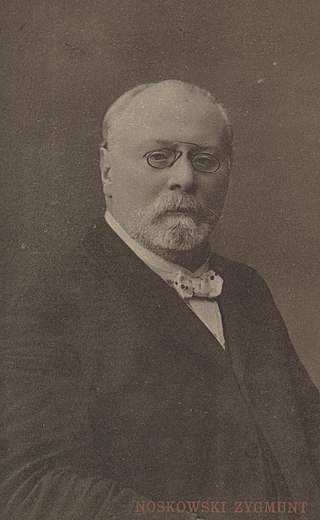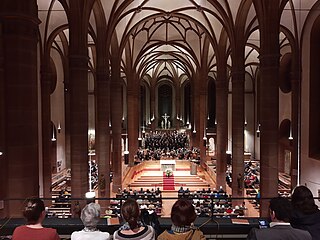
A nocturne is a musical composition that is inspired by, or evocative of, the night.

Karl Goldmark was a Hungarian-born Viennese composer.

The Symphony No. 13 in B-flat minor, Op. 113 for bass soloist, bass chorus, and large orchestra was composed by Dmitri Shostakovich in 1962. It consists of five movements, each a setting of a Yevgeny Yevtushenko poem that describes aspects of Soviet history and life. Although the symphony is commonly referred to by the nickname Babi Yar, no such subtitle is designated in Shostakovich's manuscript score.

Alexander Nikolayevich Tcherepnin was a Russian-born composer and pianist.

Charles-Louis-Eugène Koechlin, commonly known as Charles Koechlin, was a French composer, teacher and musicologist. Among his better known works is Les Heures persanes, a set of piano pieces based on the novel Vers Ispahan by Pierre Loti and The Seven Stars Symphony, a 7 movement symphony where each movement is themed around a different film star who were popular at the time of the piece's writing (1933).

The Symphony No. 2 in E minor, Op. 27, is a four-movement composition for orchestra written from October 1906 to April 1907 by the Russian composer Sergei Rachmaninoff. The premiere was performed at the Mariinsky Theatre in Saint Petersburg on 26 January 1908, with the composer conducting. Its duration is approximately 60 minutes when performed uncut; cut performances can be as short as 35 minutes. The score is dedicated to Sergei Taneyev, a Russian composer, teacher, theorist, author, and pupil of Pyotr Ilyich Tchaikovsky. The piece remains one of the composer's most popular and best known compositions.

Spring Symphony is a choral symphony by Benjamin Britten, his Opus 44. It was dedicated to Serge Koussevitzky and the Boston Symphony Orchestra, but premiered in the Concertgebouw, Amsterdam on 14 July 1949 as part of the Holland Festival. The work is scored for soprano, alto and tenor soloists, mixed choir, boys' choir and orchestra. Britten used texts of several poems related to spring, mostly from the 16th and 17th centuries and also one by his friend W. H. Auden.
Daniel Steven Crafts is an American composer. He was born in Detroit, Michigan, but has spent most of his life in the San Francisco Bay Area.
Boris Ivanovich Tishchenko was a Russian and Soviet composer and pianist.
Ragnar Søderlind is a Norwegian composer. He has written ballets and operas, and for the concert hall, programmatic works based on poems.

Zygmunt Noskowski was a Polish composer, conductor, and teacher.

A choral symphony is a musical composition for orchestra, choir, and sometimes solo vocalists that, in its internal workings and overall musical architecture, adheres broadly to symphonic musical form. The term "choral symphony" in this context was coined by Hector Berlioz when he described his Roméo et Juliette as such in his five-paragraph introduction to that work. The direct antecedent for the choral symphony is Ludwig van Beethoven's Ninth Symphony. Beethoven's Ninth incorporates part of the ode An die Freude, a poem by Friedrich Schiller, with text sung by soloists and chorus in the last movement. It is the first example of a major composer's use of the human voice on the same level as instruments in a symphony.

Antonín Dvořák's Stabat Mater, Op. 58 (B. 71), is an extended setting for vocal soloists, choir and orchestra of the 20 stanzas of the Stabat Mater sequence. Dvořák sketched the composition in 1876 and completed it in 1877. It has been characterized as a sacred cantata and as an oratorio, and consists of ten movements of which only the first and the last are thematically connected. Its total performance time is around 85 minutes.

Wang Xilin is a Chinese composer.
Karol Szymanowski completed his Symphony No. 2 in B-flat major, Op. 19 in 1909 at the age of 27. Szymanowski was greatly influenced by German culture and the symphony has many echoes of Richard Strauss and Max Reger. This symphony introduced Szymanowski to Europe in 1911-12, following its Warsaw premiere on 7 April 1911 and it was heard in Berlin, Leipzig and Vienna. The symphony was published soon after the composer's death after much revision. This symphony and its use of a solo violin laid the foundation, so to speak, of Szymanowski's first Violin Concerto. A typical performance of the symphony lasts about 30 minutes.
The Symphony No. 4 Op. 60 is a work for solo piano and orchestra written by the Polish composer Karol Szymanowski between March and June 1932. It is dedicated to the pianist Arthur Rubinstein. Szymanowski himself played the piano part at the premiere performance on 9 October 1932, with Grzegorz Fitelberg conducting the Poznań City Orchestra.

String Quartet No. 1 "Already it is Dusk" Op. 62, is a composition for string quartet by Henryk Górecki. Written in 1988 after a long period of focus on vocal music, it was first performed by the Kronos Quartet on 21 January 1989 at the Walker Art Center in Minneapolis. All three of Górecki's string quartets were written for the Kronos Quartet. It is published by Boosey & Hawkes and PWM Edition.












